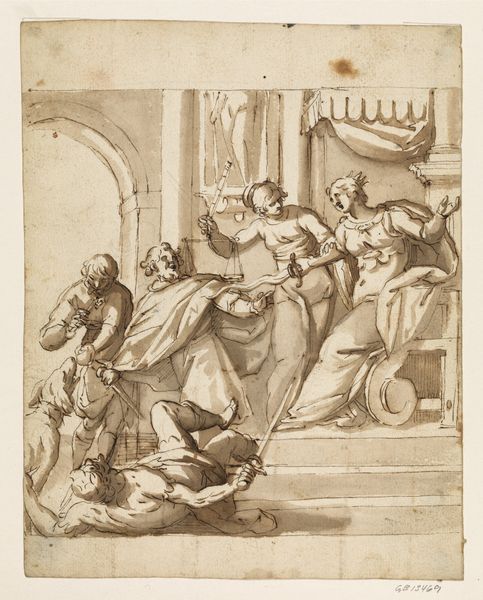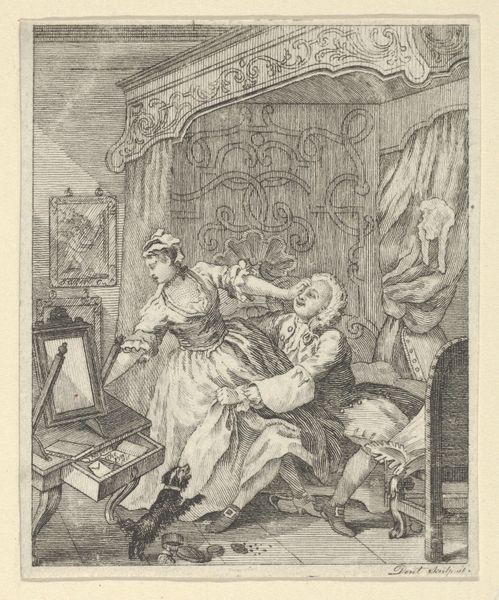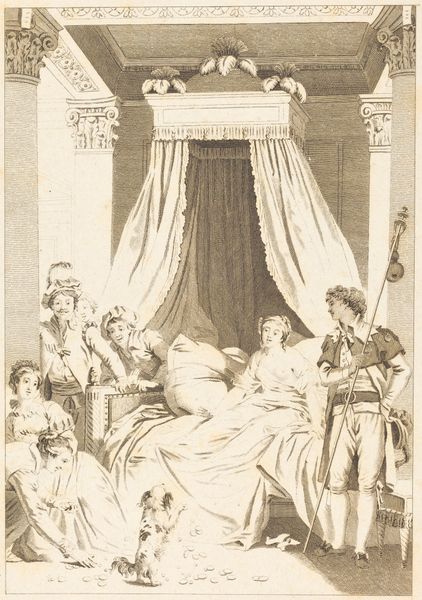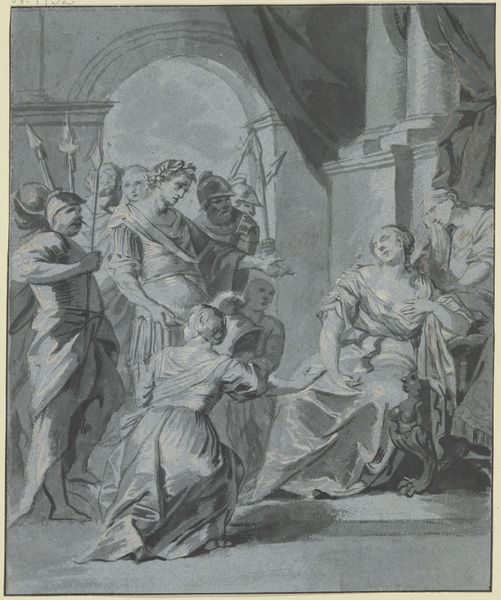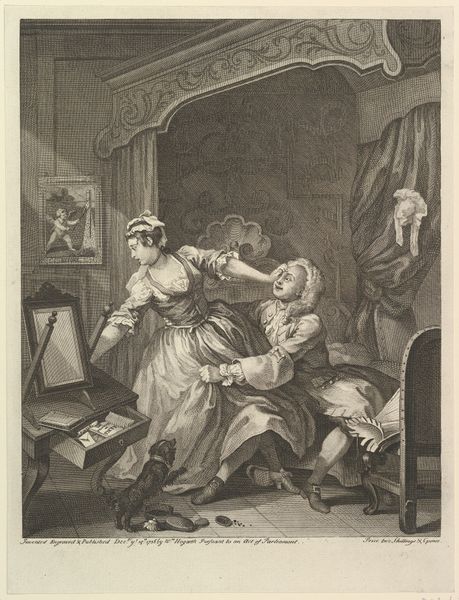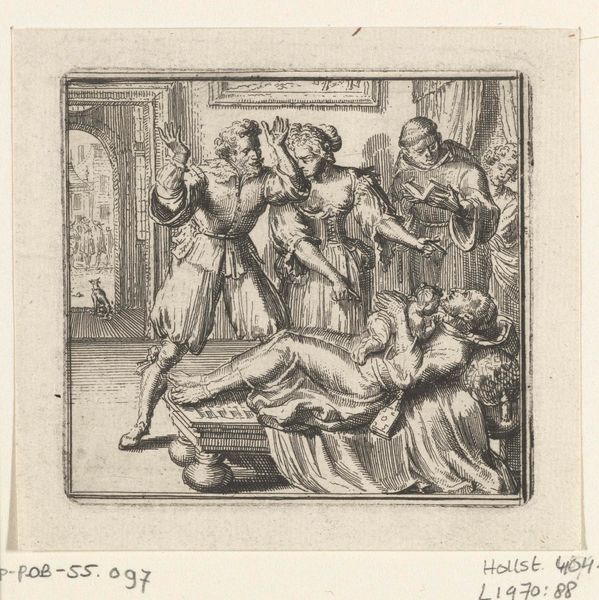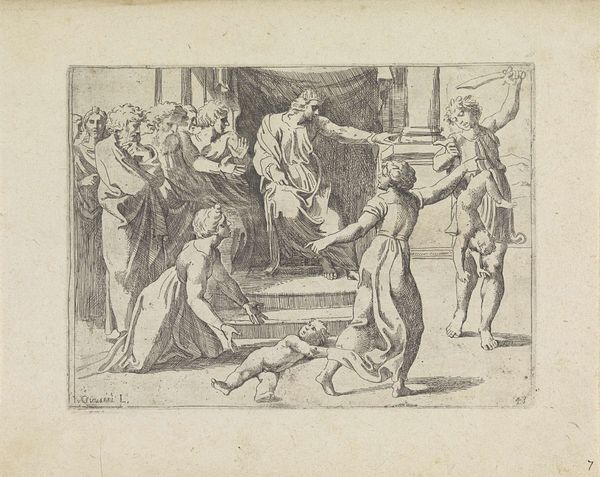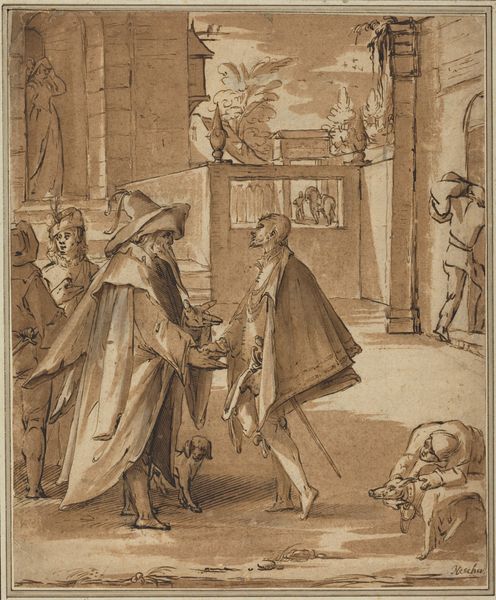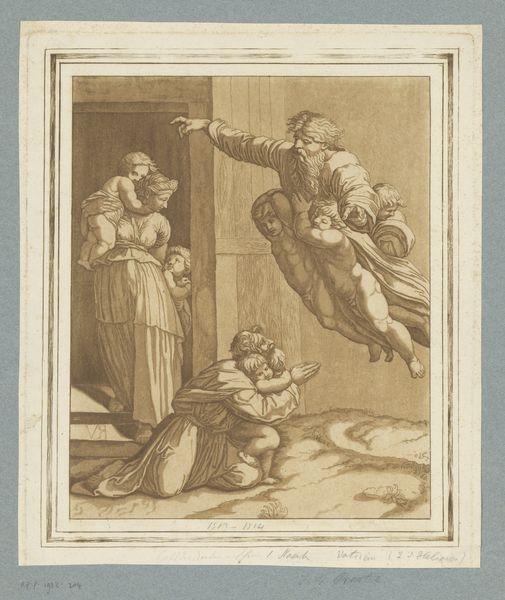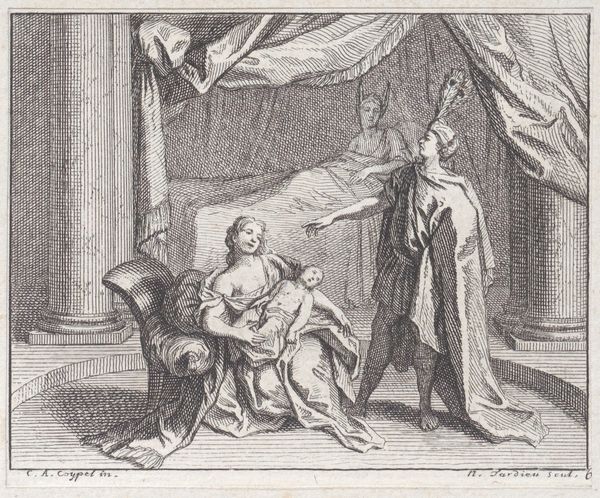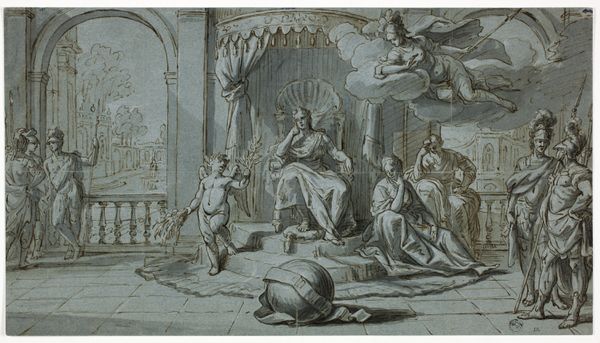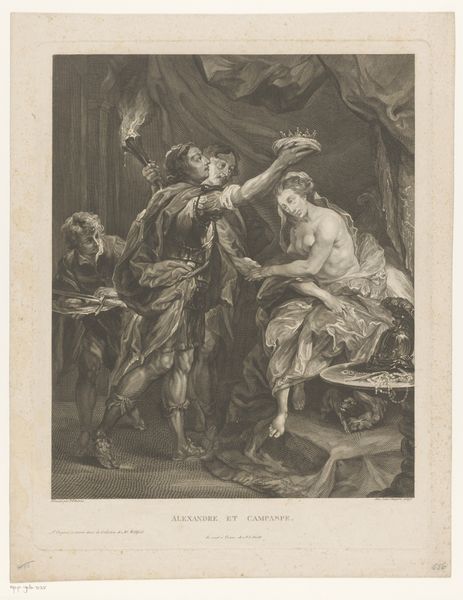
On trouve le corps mort de l'hote que l'on avait cache 1727
0:00
0:00
drawing, paper, pen, charcoal
#
drawing
#
narrative-art
#
charcoal drawing
#
figuration
#
paper
#
pen
#
genre-painting
#
charcoal
#
history-painting
#
rococo
Dimensions: overall: 32.7 x 28 cm (12 7/8 x 11 in.)
Copyright: National Gallery of Art: CC0 1.0
Editor: So, here we have "On trouve le corps mort de l'hote que l'on avait cache" by Jean-Baptiste Oudry, dating to 1727. It's a drawing done with pen, charcoal, and white chalk on paper. The scene is quite dramatic, filled with these shocked figures, and I’m struck by how immediate the horror feels despite the distance of time. What stands out to you? Curator: What grabs my attention is the materiality of the scene depicted – those flowing skirts, rendered in charcoal, speak to the textile production and consumption of the era. How would access to these fabrics shaped social dynamics at the time, influencing power and gender roles? Editor: That's interesting! I hadn't considered that the clothes themselves held such significance. It does bring to mind the labour involved in creating those fabrics. What about the composition itself? Curator: Look at how the artist uses charcoal to build depth, focusing our attention on the textures and materials within the space. But beyond that, consider how the room itself—its design, the bed hangings, the fireplace decoration—reflect the labour and consumption practices that sustained this lifestyle. Do you think there's a critique embedded here, a suggestion of unease beneath the surface of opulence? Editor: Perhaps! I was initially caught up in the emotion of the scene, but thinking about the labour involved and the economic context definitely shifts my perspective. It becomes less about a singular tragic event, and more about the social forces that made it possible. Curator: Exactly. By examining the materials and production, we move beyond a simple narrative and towards a critical engagement with the era's values. What new meaning did this interpretation offer you? Editor: It highlighted the intersection between artistic expression and economic realities. It makes you think about the untold stories behind these surfaces, how the artist reveals what might be hidden. Thanks for offering this perspective!
Comments
No comments
Be the first to comment and join the conversation on the ultimate creative platform.
